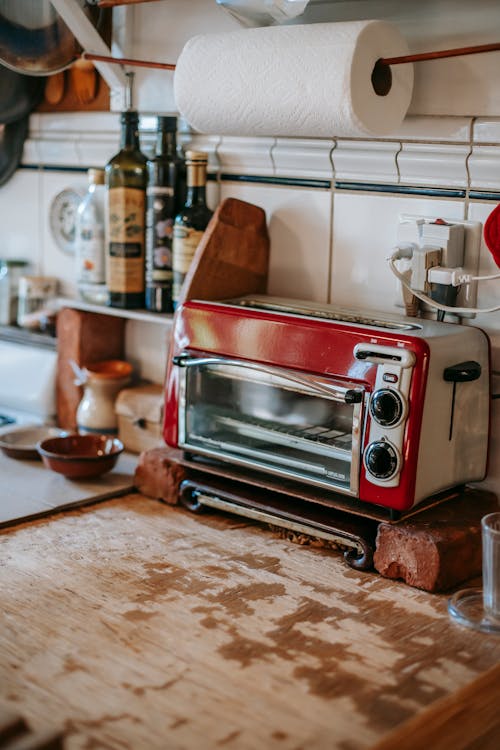What to Do with Damaged Appliances: Repair, Recycle, or Repurpose
1. Repair: The First Line of Defense
Before deciding to dispose of an appliance, consider whether it can be repaired. Often, a malfunctioning appliance may need a replacement part or a minor fix. Here’s why repair should be your first consideration:
Cost-Effectiveness: Repairing an appliance is usually cheaper than buying a new one. A small investment in a repair can extend the life of your appliance for years.
Environmental Impact: Repairing and continuing to use an appliance reduces the demand for new products, which in turn lowers the environmental footprint associated with manufacturing and transporting new appliances.

Supporting Local Businesses: If you’re not handy with tools, hiring a local repair technician can support small businesses in your community.
When to Repair:
If the cost of repair is less than half the price of a new appliance.
If the appliance is less than 10 years old.
If the appliance hasn’t had frequent issues in the past.
When Not to Repair:
If the appliance has a history of frequent breakdowns.
If the repair cost is more than 50% of the price of a new appliance.
If the appliance is near the end of its typical lifespan.
2. Recycle: Give New Life to Old Parts
When an appliance is beyond repair, recycling is an excellent option. Many old appliances contain valuable metals and materials that can be reused in manufacturing new products. Recycling helps reduce waste, conserve natural resources, and lower greenhouse gas emissions.
Steps to Recycle Your Appliance:
Check Local Regulations: Different areas have varying rules for recycling large appliances. Some municipalities offer free pick-up services for old appliances, while others may have drop-off locations.
Find a Certified Recycler: Look for recyclers who are certified by organizations such as the Environmental Protection Agency (EPA). Certified recyclers follow strict guidelines to ensure that materials are handled safely and sustainably.
Retailer Take-Back Programs: Some retailers offer take-back programs where they collect your old appliance when you purchase a new one. These programs often ensure that the appliances are recycled properly.
Don’t Forget the Extras: Before recycling, remove any personal items, detachable parts, or hazardous materials such as batteries or refrigerants. These should be disposed of according to local guidelines.

3. Donate: Help Someone in Need
If your appliance is still in working condition or can be easily repaired, consider donating it. There are many organizations and individuals who could benefit from a gently used appliance. Donation is a great way to extend the life of your appliance while helping others.
Places to Donate:
Charities: Organizations like Goodwill, the Salvation Army, and Habitat for Humanity often accept appliances in working condition. These charities typically refurbish and sell the items to raise funds for their causes.
Shelters: Homeless shelters, women’s shelters, and other community organizations may need appliances to help furnish their facilities or support those in need.
Schools and Churches: Local schools, churches, or community centers might accept appliance donations for their kitchens, staff rooms, or community programs.
Tax Benefits: Donating your appliance may also come with a tax deduction. Keep a receipt from the charity to document your donation.
4. Sell: Turn Trash into Cash
If your appliance still works or can be easily fixed, selling it can be a profitable way to get rid of it. Many people are on the lookout for affordable used appliances, especially if they’re on a tight budget or need something temporary.

Where to Sell:
Online Marketplaces: Websites like Facebook Marketplace, OLX, and Carousell allow you to list your appliance for sale to a local audience. Be sure to include clear photos and a detailed description of the appliance's condition.
Garage Sales: If you’re looking to declutter your home, consider hosting a garage sale. This can be an effective way to sell your appliance alongside other items you no longer need.
Classified Ads: Placing an ad in your local newspaper or community bulletin board can also attract buyers looking for second-hand appliances.
Tips for Selling:
Clean the appliance thoroughly before listing it.
Be honest about its condition and any known issues.
Price it competitively based on similar listings.
Be prepared to negotiate with buyers.
5. Upcycle: Get Creative with Repurposing
Upcycling is the process of transforming an old or broken item into something new and functional. With a bit of creativity, you can turn your old appliance into a unique piece of home décor or even a new functional item.
Upcycling Ideas:
Refrigerator: Convert an old refrigerator into a storage cabinet for your garage or workshop. Remove the doors and shelves, and you have a ready-made storage unit.
Washing Machine Drum: The drum of a washing machine can be repurposed as a fire pit, a planter, or even a unique coffee table. Its metal structure is durable and lends itself to various creative projects.
Microwave: Use the casing of an old microwave as a small storage unit or toolbox. You can even remove the door and turn it into a mini display case.
Stove or Oven: The oven door can be repurposed into a vintage-looking mirror or a photo frame. The stove itself can be transformed into a quirky outdoor grill or smoker.
Benefits of Upcycling:
Reduces waste by reusing materials.
Creates one-of-a-kind pieces that add character to your home.
Saves money by turning something old into something new and functional.

6. Dispose of Responsibly: Avoid Landfills
If an appliance is truly beyond repair, recycling, or donation, the final option is to dispose of it. However, it’s crucial to do this responsibly to minimize environmental impact.
How to Dispose of Appliances:
Check for Hazardous Materials: Many appliances contain hazardous materials such as refrigerants, oils, and heavy metals. These need to be properly removed and disposed of to avoid environmental contamination.
Use a Certified Disposal Service: Contact a waste management company that specializes in appliance disposal. These companies have the necessary equipment and expertise to handle large appliances and dispose of them in an environmentally friendly manner.
Avoid Illegal Dumping: Never dump appliances in unauthorized areas or leave them by the roadside. This is illegal and harmful to the environment. Always follow local regulations for disposal.
Alternatives to Dumping:
Bulk Waste Pick-Up: Some municipalities offer bulk waste pick-up services for large items like appliances. Check with your local government to see if this service is available.
Community Clean-Up Days: Participate in community clean-up days where residents can dispose of large items at designated locations.
Dealing with old or broken appliances doesn’t have to be a headache. By considering repair, recycling, donation, selling, upcycling, or responsible disposal, you can make informed decisions that benefit both you and the environment. Each option helps to reduce waste, conserve resources, and contribute to a more sustainable future. The next time you find yourself with an old appliance on your hands, remember that there’s more than one way to handle it—responsibly and creatively.




